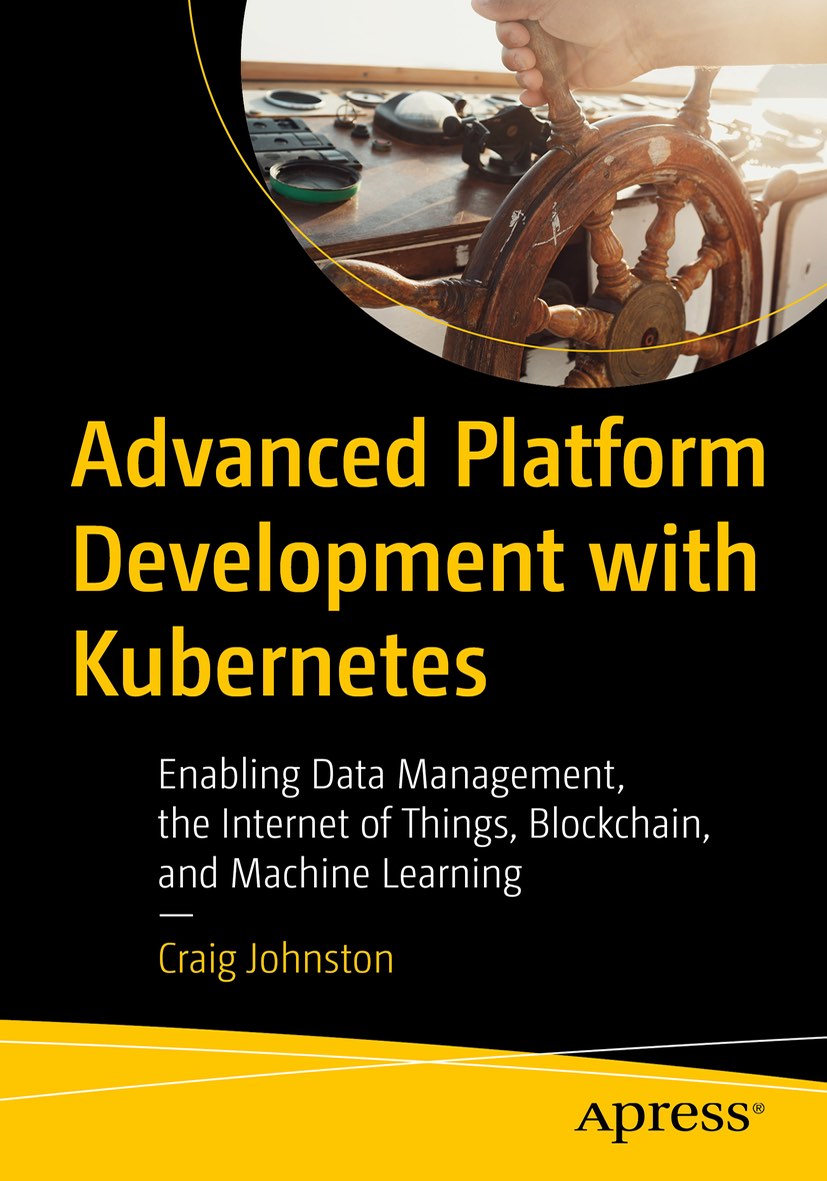I use a few Kubernetes clusters on a daily basis, and I use kubectl to access and configure them from my workstation. There are dozens of ways to configure kubectl however I find the following method the easiest for me to manage and not make a mess.
I also set up test clusters from time-to-time, and so keeping my configs organized is, so I don’t confuse myself or make a mess.
For this post, I’ll talk about four clusters and how I have them organized. The following is a list of the clusters I am managing:
- minikube: running on my local workstation
- work-dev: a development cluster for my professional projects
- work-prod: a large production cluster I host client projects and services on
- txn2-phc: is a Production Hobby Cluster I use for experiments in infrastructure and microservices

Advanced Platform Development with Kubernetes
What You'll Learn
- Build data pipelines with MQTT, NiFi, Logstash, MinIO, Hive, Presto, Kafka and Elasticsearch
- Leverage Serverless ETL with OpenFaaS
- Explore Blockchain networking with Ethereum
- Support a multi-tenant Data Science platform with JupyterHub, MLflow and Seldon Core
- Build a Multi-cloud, Hybrid cluster, securely bridging on-premise and cloud-based Kubernetes nodes
kubectl looks at an environment variable called KUBECONFIG to hold a colon-separated list of paths to configuration files. kubectl configurations can all be confined in one file. However, if multiple files are specified, kubectl combines them internally. I prefer the separate config file method since it’s a little bit more scalable for my brain.
Each Kubernetes cluster has an admin config file generated when installed. The Kubernetes config is found on the master node typically under:
/etc/kubernetes/admin.conf
Install kubectl on your local workstation. If the install went correctly, you should have a .kube folder just off your home directory. The /home/USER/.kube/ holds all of your config files.
/home/USER/.kube/
I populate this directory using the scp (secure copy) command on my local workstation and download each config into /home/USER/.kube/. Of course, you need to replace USER with your username. You can also use the tilde character ~ to denote your home directory in most command shells, and I use that here:
# download the Kubernetes admin config for work dev
scp root@WORK_DEV_SERVER:/etc/kubernetes/admin.conf ~/.kube/config-work-dev`
# download the Kubernetes admin config for work production
scp root@WORK_PROD_SERVER:/etc/kubernetes/admin.conf ~/.kube/config-work-prod`
# download the Kubernetes admin config for txn2 production hobby
scp root@PHC_SERVER:/etc/kubernetes/admin.conf ~/.kube/config-txn2-phc`
The above scp method is one way to get the files; you can use whatever method you like. The idea is that we need each one in our .kube directory and named appropriately. I like to name them config-context, where context is the name of the configuration context I’ll be giving them in the next step.
Each configuration file has three parts I’ll be concerned with:
- clusters
- users
- contexts (associates users with clusters)
The clusters key in each config hold definitions of one or more clusters. The name: of the cluster is likely to be generic and may need adjustment to something more specific. In my configuration file config-work-dev I change the name: of the cluster to work-dev-cluster. The server: value is also wrong since it’s an internal IP (this will not always be the case), ensure the server: points to an IP address accessible from your local workstation and should look something like n.n.n.n:6443.
...
- cluster:
server: https://1.1.1.1:6443
name: work-dev-cluster
...
Under the user: section change the name of the users to match the cluster context, change it to something like:
users:
- name: work-dev-admin
...
Change the context: section to properly tie the user: and cluster: together:
contexts:
- context:
cluster: work-dev-cluster
user: work-dev-admin
name: work-dev
Update each of the config files, in my case
- ~/.kube/config-work-dev
- ~/.kube/config-work-prod
- ~/.kube/config-txn2-phc
Next, we need to set the KUBECONFIG environment variable with them. I use my .bash_profile script but you can use whatever script your shell uses to set up. Add paths similar to:
export KUBECONFIG=$HOME/.kube/config-work-dev:$HOME/.kube/config-work-prod:$HOME/.kube/txn2-phc
You may need to open a fresh terminal to use the newly configured KUBECONFIG environment variable. Check the paths:
echo $KUBECONFIG
/Users/ME/.kube/config-work-dev:/Users/ME/.kube/config-work-prod:/Users/ME/.kube/txn2-phc
You are now able to run some commands to manage your kubectl context:
# get the current context
kubectl config current-context
# use a different context
kubectl config use-context work-dev
Now you can make Kubernetes clusters all over the place and have a single kubectl on your local workstation to manage them all.
Unable to connect to the server: x509: certificate is valid for ….
If you changed the cluster server to a hostname (like lax2.example.com) and did not use that name when setting up the cluster with kubeadm, then you will need to rebuild the cert on the master. This is easy to do. Check out my article Kubectl x509 Unable to Connect for a few simple steps. Otherwise, just use the public IP address of the master node.
Port Forwarding / Local Development
Check out kubefwd for a simple command line utility that bulk forwards services of one or more namespaces to your local workstation.
If in a few days you find yourself setting up a cluster in Japan or Germany on Linode, and another two in Australia and France on vultr, then you may have just joined the PHC (Performance Hobby Clusters) club. Some people tinker late at night on their truck, we benchmark and test the resilience of node failures on our overseas, budget kubernetes clusters. It’s all about going big, on the cheap.
Resources
- install kubectl
- Production Hobby Cluster how-to article.
- vultr for cheap instance hosting for Production Hobby Cluster
This blog post, titled: "kubectl Context Multiple Clusters: Managing multiple clusters with kubectl." by Craig Johnston, is licensed under a Creative Commons Attribution 4.0 International License.

SUPPORT
Order my new Kubernetes book: Advanced Platform Development with Kubernetes: Enabling Data Management, the Internet of Things, Blockchain, and Machine Learning
